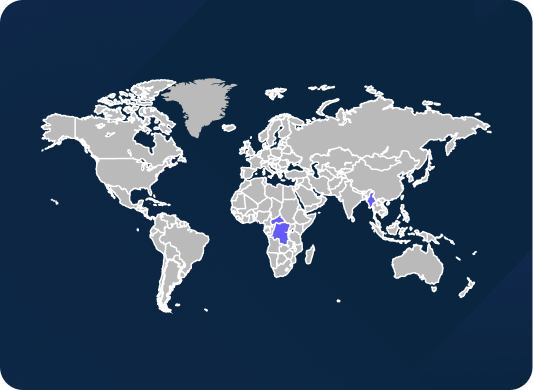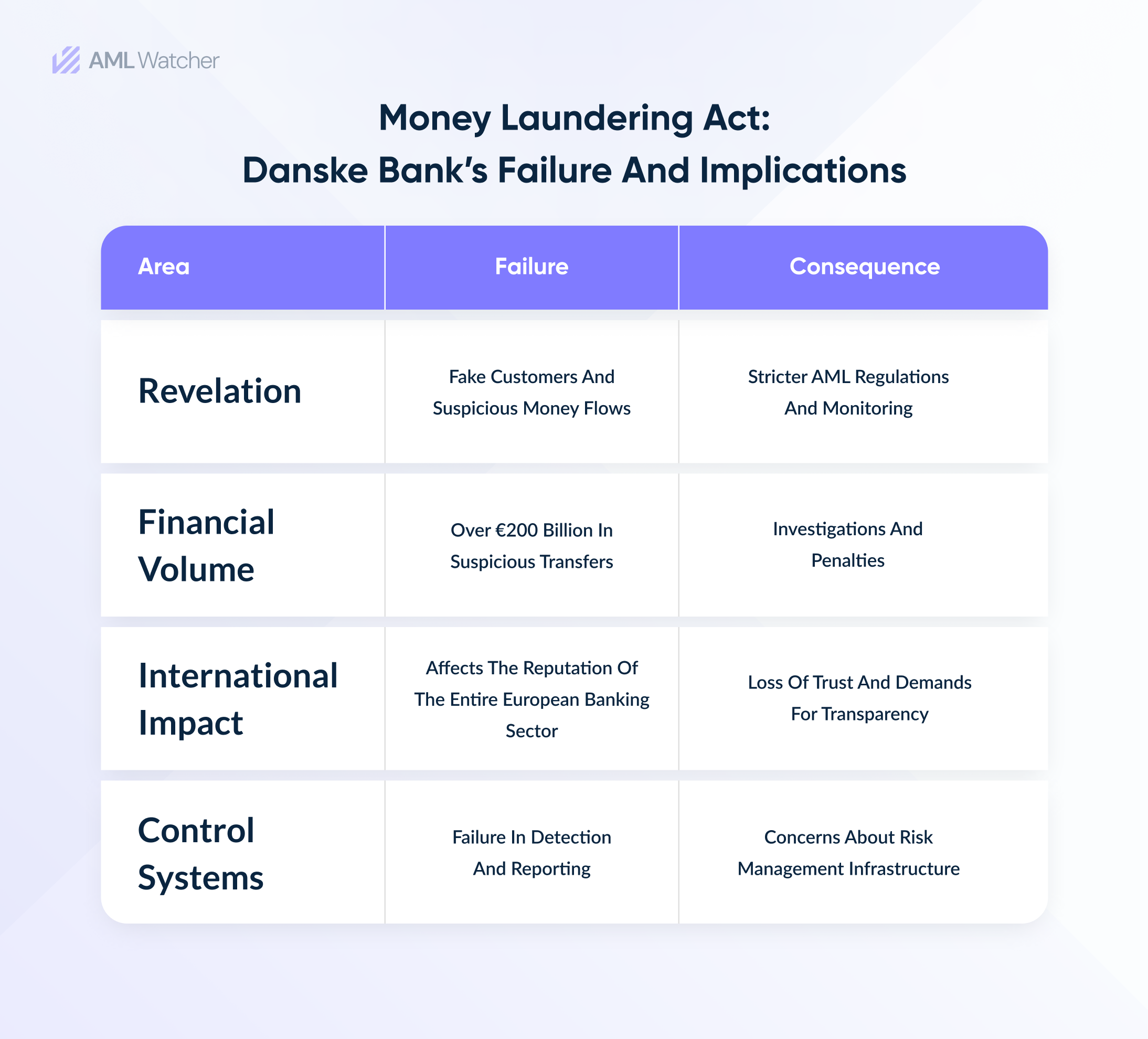
7 Use Cases Of Artificial Intelligence In Anti-Money Laundering

As of 2023, non-compliant fines for AML regulations aggregated $6.6 billion, worldwide. This meant the amount of crime incidence rose to 57% from the previous year. The number of fines showed a marked increase, and some areas like cryptocurrency companies are facing the highest rate. They get fines of more than $5.8 bn, which occurred due to a failure to implement sanctions and inadequate customer checks. Furthermore, the banking industry is seriously affected with penalties adding up to over $835 million because of their continued weaknesses in sanction compliance and transaction monitoring among some institutions. Besides, the gambling sector received $475 million in penalties; the majority of which were due to the lack of necessary due diligence and transaction monitoring programs.
Hereby, the point is that the institutions strive to adopt efficient AML programs to prevent violations and reduce fines in an era where Artificial Intelligence has been growing at an exponential rate. The year 2023 symbolized that AI in AML became a rising technology, with many claiming it would heighten the Industrial Revolution.
To keep this importance in mind, we will discover the key aspects where AI is efficient for AML and what kind of changes are presented by it.
The Rising Role Of AI In The Anti-Money Laundering World
As ‘Kai-Fu Lee explains in his recent book, AI Superpowers: China, Silicon Valley, and the New World Order; “Machine Learning and Artificial Intelligence have advanced from the discovery stage to the execution and implementation phase.”’
AI is gaining a lot of momentum in AML monitoring as it is a fundamental tool for dealing with the latest financial challenges and new economic changes. The AML machine learning technologies and strategies for the supervision of AML acts together with Artificial Intelligence are becoming the epicenter of the digitized financial market. The fact is, that AI is aimed at modifications of the whole compliance approach and risk mitigation across the financial and banking sectors.
AI technologies hold an enormous capacity for automation, supporting rapid processes and efficient workflows, that enable professionals to do higher-level tasks. However, the depth of applying AI may be confusing about the suitability and the appropriate time of implementation, especially in highly regulated places like anti-money laundering where regulation can be quite stringent. Adoption of AML AI by the financial sector requires analysis of how this technology could be used in day-to-day business operations and concerning risks and repercussions. Therefore they will be able to preserve the compliance regulations while improving the current AML processes.
How about reading about the most common use cases of AI in detecting and preventing money laundering and financial crimes? Continue reading this article to get it.
Use Cases Of Artificial Intelligence In Enhancing AML Practices
AI in AML is empowering risk management efforts by providing effective means for detecting, stopping, and reporting money laundry operations, ensuring regulatory practices and strict international and regional laws that are built into the system to ensure integrity within the financial system thus ensuring minimal and changing risks.
Let us go through the AI role in the transformation of global compliance that leads to enhanced AML levels.
-
AI-Driven Risk Assessment
The use of artificial intelligence anti-money laundering monitoring has radically extended AML risk assessment by empowering a type of analysis that is sensitive and broad in scope. AI-employed AML compliance tools with their sophisticated algorithms offer a deeper insight into money laundering risks. This provides a feasible solution for detecting and analyzing money laundering activities digitally. These digital AML tools can process huge loads of data in a short time frame to get insight into the patterns and anomalies that may indicate the presence of money laundering or other financial crimes.
Example: CitiBank utilizes AI to facilitate risk management, considering customers’ transactional and behavioral patterns across global accounts. The system uses recognition patterns to appoint a score to the risk activities that pose all the greater danger of being money laundering, hence flagging alerts that need priority action.
Predictive Analytics And Proactive Risk Management
Predictive analytics with artificial intelligence refines historical and real-time data to spot possible threats and illicit activity, enabling financial institutions to take proactive preventive action. Artificial intelligence solutions expand the scope and efficacy of anti-money laundering surveillance by offering a holistic view of consumer activity through the integration of diverse data sources.
-
Real-Time Monitoring For Immediate Action
One of the most remarkable aspects of AI in AML compliance lies in its functionality to facilitate real-time monitoring and analysis. This achieves the goal of a possible scam or unusual activity being detected and remarkably investigated before measures of money laundering prevention are put in place if it is proven true.
Example: Standard Chartered Bank utilizes AI-powered operations in risk-free transaction techniques. This technology monitors all transactions as they take place, which allows for instant alerts on all fraudulent activities, and leaves less time for damaging money laundering attempts to happen.
-
Streamlining Compliance Process
AI not only improves risk assessment but also completely automates the whole AML process management. AI systems assist through the automation of repetitive tasks and by doing so, the teams have more time to devote to more important strategic jobs. For machine learning; a subset of AI plays a major role in implementing the monitoring process by progressively learning from the data inputs it receives thereby refining the AML process and increasing the operational efficiency across time.
Example: With its implementation of AI technologies, HSBC has decreased the time and staff required to carry out the regulatory procedures, making them more and more effective and cost-saving.
-
Anomaly Detection By Advanced Data Analytics
Big data analytics, AI, and ML developments in the AML compliance space are well ahead of other technologies, making it possible to identify intricate patterns and abnormalities that could be signs of money laundering. By combining information from several sources, these solutions help financial institutions make better judgments and proactively stop possible illegal activity.
-
Compliance And Regulatory Reporting Software
Financial organizations may effectively handle the intricacies of regulatory reporting and compliance by utilizing AI-powered compliance solutions, which prioritize the automation of report creation and record management. These technologies ensure that AML procedures comply with legal requirements by encouraging due diligence and averting any non-compliance fines.
-
Blockchain Analysis Tools
Blockchain analysis tools have become crucial in AML surveillance for cryptocurrencies and digital assets, making it possible to monitor and identify suspicious transactions. These technologies are specifically tailored to monitor, identify patterns, and pinpoint suspicious activities in the digital world. Furthermore, they provide investigators with a 360-degree vision of the money flow that gives institutions the power to be able to see cryptocurrency transactions effectively.
Thus the use of artificial intelligence and other advanced technology constitutes a rapid core trend in the detection and money laundering prevention which provides an opportunity to expand the capabilities of financial institutions in fighting financial crime, while also minimizing the expenses or required time for monitoring. AI’s predictive analytics, create a very robust system that proactively manages and reduces risk, therefore, compliance efforts can be enhanced.
Case Study: Danske Bank’s Use Of AI In Money Laundering Detection
-
Background
In 2023, Danske Bank, Denmark’s largest banking institution, received prominence with the biggest money laundering controversies that tainted its history among others. Its Estonian Branch, which was charged with laundering more than €200 billion between 2007 and 2015, was at the core of the problem. According to reports, this enormous quantity of money originated from dubious accounts in Moldova, Azerbaijan, and Russia. The scandal’s investigations showed that Danske Bank disregarded internal and external warnings regarding the suspicious character of the transactions and had not put in place sufficient anti-money laundering procedures. According to the U.S. Department of Justice, Danske facilitated high-risk clients’ access to the American financial system in Estonia and other former Soviet states.
-
Application Of AI In Detecting Money Laundering
After the scandal and legal penalties, Danske Bank adopted advanced AML AI technologies that are used to segregate and classify data by identifying suspicious patterns in the bank’s transaction database. The key implementations are:
-
Enhancement Of Transaction Monitoring Systems
In the Danske Bank case, artificial intelligence-based solutions were introduced to enhance the process of tracking flows within the bank’s network. The bank has decided to integrate machine learning algorithms to spot red flags that might arise during financial operations.
-
Integration Of Advanced Data Analytics
AI technologies make it possible to integrate big data analytics into the banks’ monitoring systems, which provides them with a more structured approach to control the risks of loan default. By making the process intensive, as opposed to relying on conventional methods, Danske Bank can look through large volumes of transaction data and detect hidden money laundering schemes that can bypass the latter.
-
Development Of Predictive Models
The bank created regression-based analytical models feeding on historical data, which helped the bank get to know the indicators of money laundering. Such techniques are geared towards progressing by employing the AML machine learning approach and as the models build their accuracy in identifying unusual activities.
-
Automated Reporting And Compliance
These AI systems are instrumental in the automation required in the reporting necessities to match with the international AML regulations. AI systems adopted by Danske Bank are programmed to detect and flag those activities that could be potentially suspicious, speed up the decision-making process, and provide timely reporting to regulating organizations.
So, the Danske Bank case study serves as an important example for the banking industry of serious threats of not maintaining strong protocols following AML regulations as well as the possibility for AI technology to greatly improve the efficacy of these controls after a crisis.
To wind it up, the future AML regulatory regime will put a higher emphasis on AI adoption. AI gives financial institutions the ability to work with highly refined analytical tools that function by processing huge volumes of data and discovering patterns as well as deviations that possibly indicate suspicious activities.
AI is seen as an innovation that helps in the AML process by cutting costs, maximizing transparency, creating efficiency, and abiding by regulatory AML laws. AI enables automation of such simple tasks as data collection, document analysis, and compliance checking, which in turn leads to less valuable human resources time and more reasonable use of these resources for more complicated investigations, strategic issues, etc.
Thus, the integration of AI in AML compliance is no longer a thought but an inevitable action of upgrading the AML framework to the level that would be future-proof.
With this rising importance, AML Watcher; the leading sanction screening provider offers a cutting-edge AI-backed AML screening solution by classifying and prioritizing data to improve the governance and control of customer information. Our AML Solutions backed by Artificial Intelligence will holistically allow you to comply with all the international regulations and policies while minimizing the financial risk.
AML Watcher enables financial institutions to adhere to the regulations, and facilities in lowering both operational and reputational risks, avoids fines and penalties, keeps assets safe from fraud and money laundering, and minimizes exposure to fraud.
Our AI solutions enable enterprises to manage and analyze unstructured data with refined and structured results. That will improve AML compliance by facilitating better risk management and decision-making by thoroughly examining more than 60,000 global sanction lists, identifying patterns, and cross-referencing consumer data.
Contact our staff now to get additional information about our AI-powered sanction screening solutions to mitigate financial crimes and money laundering acts.
We are here to consult you
Switch to AML Watcher today and reduce your current AML cost by 50% - no questions asked.
- Find right product and pricing for your business
- Get your current solution provider audit & minimise your changeover risk
- Gain expert insights with quick response time to your queries

 Compliance Guidelines: United Arab Emirates
Compliance Guidelines: United Arab Emirates
 Compliance Guidelines: Germany
Compliance Guidelines: Germany
 UK to Launch World’s First Sanctions Regime to Target Upstream People Smuggling
UK to Launch World’s First Sanctions Regime to Target Upstream People Smuggling
 Utah Lawsuit Alleges TikTok Livestreams Facilitated Money Laundering Activities
Utah Lawsuit Alleges TikTok Livestreams Facilitated Money Laundering Activities


 Why Should states conduct AML Due Diligence for CBI/RBI Investment Schemes?
Why Should states conduct AML Due Diligence for CBI/RBI Investment Schemes?
 How can businesses comply with US sanctions on vessels?
How can businesses comply with US sanctions on vessels?
 Difference In AML: DNFBPs Vs Financial Sector
Difference In AML: DNFBPs Vs Financial Sector
 Difference in EU and US Sanctions Programs - How It Impacts Compliance?
Difference in EU and US Sanctions Programs - How It Impacts Compliance?
 How Regulatory Gaps Fueling Money Laundering in High Risk Jurisdictions?
How Regulatory Gaps Fueling Money Laundering in High Risk Jurisdictions?
 Mapping Anti-Money Laundering Regulations in Malaysia
Mapping Anti-Money Laundering Regulations in Malaysia






